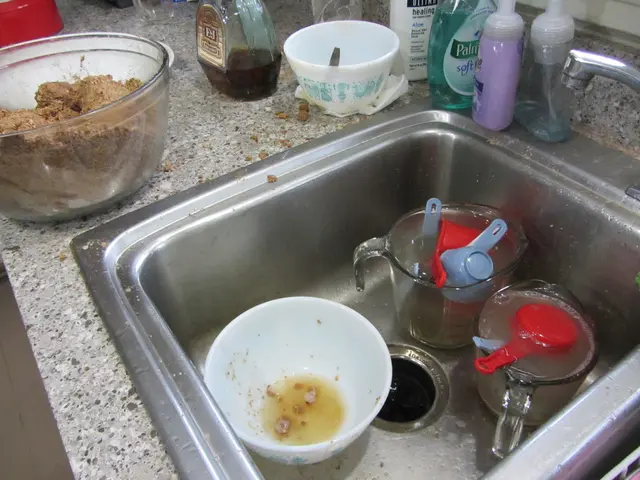Interpreting and Decoding Seed Packets: A Simply Guide
Breaking Down Seed Packets Like a Pro:
Welcome to the first week of March! Yep, it's that time again- seed-starting season! Whether you're growing your own food indoors or out, it's crucial to read those seed packets, ace those plants, and reap the bounty.
Gone are the days of throwing seeds haphazardly. Read on to learn about the critical info hiding within those tiny packets and how to make the most of your gardening journey.
From Perplexed Beginner to Knowledgeable Green Thumb
Let's face it; we've all made rookie mistakes. Remember that pathetic carrot-planting attempt? Yep, me too. No seeds started indoors? No trouble learning now. Plus, I've been living proof that anyone can garden since clearly, I had no flipping idea what I was doing at first!
Sounds blasphemous? Here's the point: If you dive headfirst without learning the ropes, you'll probably make a few missteps. The good news? You CAN learn, and failure is simply part of the fun.
Luckily, we've come a long way since then, no longer doomed to failure due to ignorance. So, read up on seed packets, take your garden game to the next level, and join our band of green thumb geniuses!
How to Sift Through Seed Packets
Now that you're thoroughly motivated, you might be wondering, "What exactly do I find in these packets?" Allow me to demystify the contents.
Vital Info Stamped on Seed Packets
Fancy Plant Stuff
First things first: easily recognize the type of plant you'll be growing, for example, "Tomatoes/Roma" or "Lettuce/Bibb." Be discerning, select plants that suit your needs-trust me, 'Mighty Tomato' may be cool, but if your mission is lettuce... well, you get the idea.
Other Cool Stuff Hidden in the Fine Print
Seed Classifications
Open-pollinated? Hybrid? What the heck? Fear not; read on for insights about seeds and their respective traits.
- Open-Pollinated (OP): As nature intended, these seeds are pollinated naturally and often grow true to their parent plants.
- Hybrid (F1): Deliberately created offspring from crossing two plant varieties. They have desirable qualities, but they're not as predictable when it comes to saving seeds.
- Heirloom: Open-pollinated seeds cultivated and saved for generations. These have been selected for their superior qualities such as superior taste, higher yield, or disease resistance.
- Genetically Modified (GMO): Do not worry yourself about GMOs- they're not geared towards home gardeners.
Harvest Timeline
Seed packets often provide the days-to-maturity or days-to-harvest, essential to optimize your garden's yield.
Start Time & Place
Whether to sow outdoors, start indoors, or acquire seedlings, instructions are key to ensuring the best conditions for your garden gems.
Packet Age
You should consider the seed packet's age as older seeds tend to have lower germination rates. (So, use 'em up quick, and plant 'em fresh!)
Amount of Seeds
The number of seeds in a packet helps determine what you need for your garden while preventing overbuying. Think rationally-100 seeds may be excessive for a single tomato plant, but perfect for a dense row of carrots.
Planting Instructions
This may get technical, but don't zone out!
- Sowing Depth: Plant your seeds approximately twice as deep as their diameter for effortless germination.
- Spacing: Details how far apart to plant seeds and, on occasion, how far apart to space your rows. ThePacketLife has it covered, even providing simple diagrams[1].
Bonus Info Sometimes Included
You may find additional details, such as
Germination Rate
The percentage of seeds that will successfully germinate and grow. This helps you better understand what to expect from your initial seed count.
Days to Germination
Helpful when your peas haven't popped up yet, knowing the typical number of days before germination helps you avoid unnecessary worry.
Sun Requirements
Some packets indicate the amount of sunlight your plants require, whether it's full sun, partial sun, or shade.
Other Hints
Additional tidbits such as soil temperature preferences or specific planting techniques may be included for optimal growth.
Don't Have a Packet? DIY Knowledge is Key!
If you're saving seeds, participating in a seed exchange, or collecting seeds from friendly neighbors, you might encounter homemade packets with no information. Fear not, information is at your fingertips, allowing you to identify plants and apply the growing tips mentioned above.
Take a moment to write down your seeds' type and variety frequently during the growing season so that you can refer back to it when needed.
With practical knowledge under your belt, you're well on your way to success. No need to become a seed-starting maven, but being aware of the information provided in seed packets and how it benefits your garden can make all the difference. Now, in the spirit of IKEA furniture, go forth and build your germination empire!
Stay tuned: sign up for my free Resource Library to get my Seed-Starting Cheat Sheet and much more. Happy gardening, folks!
^ 1. ThePacketLife, Seed Packet Dimensions^ 2. GardenKnowHow, Starting Seeds Indoors: The Basics^ 3. LightStream, Understanding Garden Seed Packets^ 4. Sow True Seeds, Seed Planting By Zip^ 5. Almanac, How to Read a Seed Packet
Home-and-garden enthusiasts can cultivate their gardening journey by paying close attention to the information on seed packets. By understanding details such as the plant type, seed classifications, harvest timeline, and sowing instructions, gardeners can grow healthier and more successful plants. For those without seed packets, it's essential to research the plant's type, variety, and growing tips to ensure a bountiful lifestyle. Embrace knowledge and transform from a perplexed beginner to a knowledgeable green thumb!








